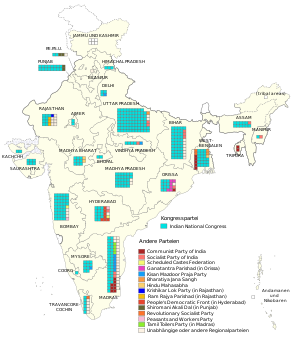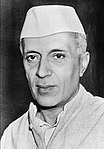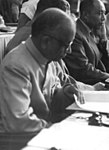India is a federation with a parliamentary system governed under the Constitution of India, which defines the power distribution between the union, or central, government and the states.
The Praja Socialist Party (PSP) is an Indian political party. It was founded when the Socialist Party, led by Jayprakash Narayan, Acharya Narendra Deva and Basawon Singh (Sinha), merged with the Kisan Mazdoor Praja Party led by J.B. Kripalani.
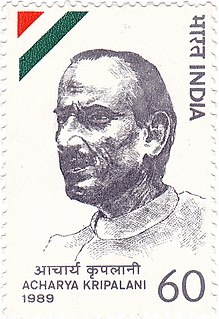
Jivatram Bhagwandas Kripalani, popularly known as Acharya Kripalani, was an Indian politician, noted particularly for holding the presidency of the Indian National Congress during the transfer of power in 1947 and the husband of Sucheta Kriplani. Kripalani was a Gandhian socialist, environmentalist, mystic and independence activist.
Mumbai North Central Lok Sabha constituency is a Lok Sabha (parliamentary) constituency of Maharashtra state in western India.

The Indian general election of 1957, held from 24 February to 9 June, was the second election to the Lok Sabha, the lower house of the Parliament of India. They were held five years after the first general election, according to the provisions of the Constitution of India. Elections to many state legislatures were held simultaneously.
The Uttar Pradesh legislative assembly election, 2007 was held in April–May 2007. It was held in order to elect a government for the state of Uttar Pradesh (U.P.) in India.
In India, a certain number of political positions and university posts are held for specific groups of the population, including Scheduled Castes/Scheduled Tribes, Anglo-Indians and Women.

The Indian general election, 2014 was held to constitute the 16th Lok Sabha, electing members of parliament for all 543 parliamentary constituencies. Running in nine phases from 7 April to 12 May 2014, it was the longest election in the country's history. According to the Election Commission of India, 814.5 million people were eligible to vote, with an increase of 100 million voters since the last general election in 2009, making it the largest ever election in the world. Around 23.1 million or 2.7% of the total eligible voters were aged 18–19 years. A total of 8,251 candidates contested for the 543 Lok Sabha seats. The average election turnout over all nine phases was around 66.38%, the highest ever in the history of Indian general elections.
Akola Lok Sabha constituency is one of the 48 Lok Sabha (parliamentary) constituencies in Maharashtra state in central India.
Bhandara Lok Sabha constituency was a former Lok Sabha (parliamentary) constituency in Maharashtra state in western India. With the delimitation of the parliamentary constituencies in 2008, based on the recommendations of the Delimitation Commission of India constituted in 2002, this constituency ceased to exist. A new constituency, Bhandara-Gondiya came into existence in place of it.
Pilibhit Lok Sabha constituency is one of the 80 Lok Sabha (parliamentary) constituencies in Uttar Pradesh state in northern India.
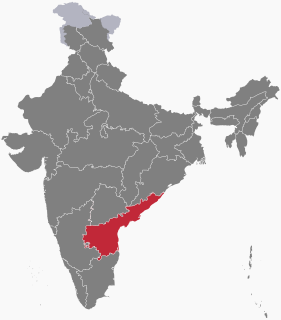
Elections in Andhra Pradesh state, India are conducted in accordance with the Constitution of India. The Assembly of Andhra Pradesh creates laws regarding the conduct of local body elections unilaterally while any changes by the state legislature to the conduct of state level elections need to be approved by the Parliament of India. In addition, the state legislature may be dismissed by the Parliament according to Article 356 of the Indian Constitution and President's rule may be imposed.
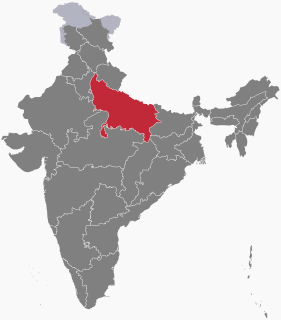
Elections in Uttar Pradesh are conducted every five years to elect the State assembly and its share of members to the Lok Sabha. The elections are conducted in accordance with the Constitution of India. The Assembly of Uttar Pradesh creates laws regarding the conduct of local body elections unilaterally while any changes by the state legislature to the conduct of state level elections need to be approved by the Parliament of India. In addition, the state legislature may be dismissed by the Parliament according to Article 356 of the Indian Constitution and President's rule may be imposed. There are 403 assembly constituencies and 80 Lok Sabha constituencies(seats). The 80 Lok Sabha constituencies of Uttar Pradesh are a deciding factor for who holds power in the 16th Lok Sabha. The state has conducted 17 assembly elections and 16 Lok Sabha elections since independence.

The Indian general election, 2014 polls in Delhi for seven Lok Sabha seats was held in a single phase on 10 April 2014. As of 16 December 2013, the total voter strength of Delhi is 11,932,069.
Thammineni Veerabhadram is an Indian politician, belonging to the Communist Party of India (Marxist). As of 2011 he was a Central Committee member of the party.

The 2019 Indian general election is scheduled to be held in seven phases from 11 April to 19 May 2019 to constitute the 17th Lok Sabha. The counting of votes will be conducted on 23 May, and on the same day the results will be declared.

The Himachal Pradesh Legislative Assembly election, 2017 was held on 9 November 2017 to elect all 68 members of the Himachal Pradesh Legislative Assembly.

A member of parliament in Lok Sabha is the representative of the Indian people in the Lok Sabha; the lower house of the Parliament of India. Members of parliament of Lok Sabha are chosen by direct elections on the basis of the adult suffrage. Parliament of India is bicameral with two houses; Rajya Sabha and the Lok Sabha. The maximum permitted strength of members of parliament in the Lok Sabha is 552. This includes maximum 530 members to represent the constituencies and states, up to 20 members to represent the union territories and not more than two members of the Anglo-Indian community to be nominated by the President of India. The party—or coalition of parties—having a majority in the Lok Sabha chooses the Prime Minister of India.
Coorg was a constituency of the Lok Sabha. It was used in the parliamentary election of 1951–1952. The constituency elected a single member of the Lok Sabha and was the sole Lok Sabha seat for the Coorg State. As of 1952, the constituency had 94,593 eligible voters.
